CAA News Today
Leave the Conference—Please!
posted by Christopher Howard — December 20, 2016
Have some free time? Looking for a good place to brainstorm 2018 session ideas over a drink? Want food recommendations other than Yelp? We love our attendees at the conference, but we also want you to leave. To help, CAA has compiled a list of staff members’ favorite places offsite. Here are a few highlights.
For drinks in midtown, CAA recommends the Library Bar, a cozy spot in the Hudson Hotel with a fireplace, books, and a pool table, and Tanner Smith’s, which boasts a great happy hour and superb cocktails. For those heading downtown, Henrietta Hudson in the West Village is a friendly bar for lesbians. In nearby Greenwich Village is Julius’, the site of a 1966 “sip in” that protested a state regulation prohibiting bars and restaurants from serving homosexuals. If watching NBA basketball or NHL hockey is your thing, the place to go is Boxers, New York’s preeminent gay sports bar, located in Hell’s Kitchen.
Everyone must eat! Within a few blocks of the conference CAA staff can recommended these three restaurants, among several others: China Grill serves upmarket Asian fusion; Fig & Olive offers upscale season Mediterranean fare and a great happy hour; and Nougatine at Jean-Georges is the home of a tasty and reasonably priced prix-fixe lunch.
A short cab or train ride away from the conference hotels are: Elephant & Castle, a charming café in the West Village; Vanessa’s Dumpling House, which dishes up inexpensive dumplings and amazing sesame pancakes, in Union Square; and Yuka, a sushi restaurant on the Upper East Side famous for its all-you-can-eat option. In the same neighborhood as Yuka is Candle 79, serving eclectic, health-conscious organic vegan dishes in swanky surroundings.
Although the Museum of Modern Art is only a half-block away from the Hilton, CAA staff recommends trekking uptown to the Met Cloisters, the Metropolitan Museum of Art’s outpost for medieval European art, as well as to various locations in Harlem for Art in FLUX. An organization whose politics lean left is Interference Archive, a library, gallery, and archive of activist and social-justice movement materials in Brooklyn.
A popular but lesser-known historical site is the Lower East Side Tenement Museum, which tells the story of urban immigration in the United States. A favorite place of contemplation for one CAA staff member is the Irish Hunger Memorial, a site in lower Manhattan that marks the struggle against hunger amid a sublime view of the New York Harbor.
News from the Art and Academic Worlds
posted by Christopher Howard — December 14, 2016
Each week CAA News summarizes eight articles, published around the web, that CAA members may find interesting and useful in their professional and creative lives.
How Trump Should Support the Arts
Since Donald Trump has given few clues as to how he will approach arts policy, I thought I would lay out what a Trump administration ought to do. First, it must save the federal government money, to appeal to the Republican Congress. Second, it should stand a chance of appealing to Trump, given his stances on other issues. Third, it should offer a reasonable chance of improving the quality of the arts in the US, and fourth, the arts community should not hate every aspect of the changes. (Read more from Bloomberg View.)
What Can Artists Do to Oppose Trump?
When Vice President–elect Mike Pence went to see Hamilton on Broadway, he was doing more than enjoying a night at the theater—he was there to triumph over an enemy. For if any work of art represented the liberal hope of the Obama years, it was surely Hamilton. Here was a patriotic attempt to open the canon of American history to people of color, to tell the stories of the past in the language of the present. (Read more from Slate.)
How Big Data Is Set to Change the Art Market
In late October, Sotheby’s announced it had acquired the Mei Moses Art Indices, a database of repeat auction sales that tracks value over time. Shortly after, Artnet said it had brought Tutela Capital, an analytics firm headed by Fabian Bocart, into its portfolio, which also includes a sizeable database of auction prices. Each company has different aims, but one thing is clear: data will play a key role in how they—and the art market—move forward. (Read more from the Art Newspaper.)
Arts Diversity: The Quota Conversation
Ask anyone in the arts about quotas and, more likely than not, you’ll get some form of commitment to a “conversation.” As in, “We should talk about whether or not to use quotas” rather than “Quotas should or should not be applied.” It’s less “Show me a quota and I’ll show you a failure” and more “These tools are limited, but I can’t bring myself to dismiss them.” (Read more from Art Professional.)
The New PhDs
American universities awarded a record number of doctorates in 2015—although the rate of growth in the number of PhD recipients continued a several-year decline. And the 55,006 recipients were more likely to be men and to be American citizens or permanent residents than they were the year before. Those are among the findings of the newest version of the federally supported Survey of Earned Doctorates, covering the year 2015. (Read more from Inside Higher Ed.)
How to Fix the Art World, Part 4
Last August ARTnews embarked on an epic project: finding out what inhabitants of the art world think is wrong with their world and how they would fix it. In the ensuing months, the magazine spoke with more than fifty individuals—artists and curators, critics and historians, art dealers and an art-fair director—to gather a range of perspectives. (Read more from ARTnews.)
The Museum of the Present
What’s a museum? This is a question I have asked more than once in the New Criterion. It’s one this magazine has been asking since its first issue. And it’s one that I wish museums would ask more frequently of themselves. Because the answers are changing—through assumptions that are often unannounced, unacknowledged, and unexplored. (Read more from the New Criterion.)
Advice on Being Advised
It’s difficult to offer general advice on the adviser-advisee relationship because it varies so much—by discipline, professor, student, or institution. How friendly, how hierarchical, or how useful the relationship differs from one pair to the next. Still, there are some near-universal implicit rules that govern this relationship. More often than not, a student learns them the hard way. (Read more from Vitae.)
News from the Art and Academic Worlds
posted by Christopher Howard — December 07, 2016
Each week CAA News summarizes eight articles, published around the web, that CAA members may find interesting and useful in their professional and creative lives.
Art Must Admit the Lesson of Donald Trump’s Election or Face Irrelevance
By now, the shock of Donald Trump’s election is fading, leaving only the horror. But we need to reckon with the shock if we are to combat the horror effectively. Since election night, the cultural sphere has valiantly rallied its opinion-leaders, declaring that art must join the fight against whatever terrors a Trump presidency has in store for us. (Read more from Artnet News.)
Professor Watchlist Is Seen as Threat to Academic Freedom
A new website that accuses nearly two hundred college professors of advancing “leftist propaganda in the classroom” and discriminating against conservative students has been criticized as a threat to academic freedom. The site, Professor Watchlist, says it names those instructors who “advance a radical agenda in lecture halls.” (Read more from the New York Times.)
Activism and Professionalism in the Workplace
Activism to me was, by necessity, subtle. Once, one of my clients said something that made me think he was gay. To prove myself an ally, I wore a rainbow watch the next time I saw him. He saw it. Blushed. Looked away. I tell myself I helped him. Change comes slowly. One person can make a difference. (Read more from Inside Higher Ed.)
The Urgency of Empathy and Social Impact in Museums
How we can start an empathy revolution in museums? How can we more fiercely recognize the meaningful work that museum professionals are doing to enact change around the relevant issues in our communities? How do we radically expand the work of museums in bringing people together and contributing to strong, resilient communities? (Read more from MuseumNext.)
Dealing with Difficult Art in Post-Election America
Over Thanksgiving weekend, an art exhibition at Salem State University was temporarily closed after a group of students complained that they found several of the works hurtful and offensive. After a closed-door meeting with fifty students, the university reopened the exhibition on November 30, but not before making “several modifications.” (Read more from the National Coalition against Censorship.)
How to Fix the Art World, Part 3
Last August ARTnews embarked on an epic project: finding out what inhabitants of the art world think is wrong with their world and how they would fix it. In the ensuing months, the magazine spoke with more than fifty individuals—artists and curators, critics and historians, art dealers and an art-fair director—to gather a range of perspectives. (Read more from ARTnews.)
Is the Destruction of Cultural Property a War Crime?
It is a settled principle in international law that the deliberate targeting or plundering of religious, historic, and cultural sites is prohibited during war. Prosecutors have discretion in the cases that they bring, but the law of war is clear about accountability in cases of cultural destruction. (Read more from Apollo.)
The Art Schools Fidel Castro Built—and Then Neglected
Designed by three architects, the Escuelas Nacionales de Arte were constructed in flamboyant, sinuous forms deliberately reflecting the local landscape. Built in brick and terracotta as a pragmatic response to the US embargo of imported steel and using the Catalan vault throughout, these were a confident repudiation of Western-style international modernism. (Read more from the Art Newspaper.)
An Interview with Mary Miller, CAA 2017 Convocation Speaker
posted by Christopher Howard — December 06, 2016
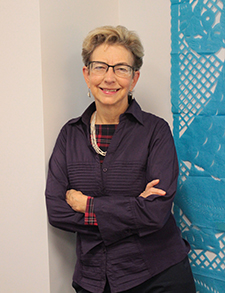
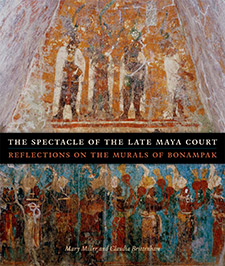
Mary Miller, Sterling Professor of History of Art at Yale University in New Haven, Connecticut, will deliver the keynote address during Convocation at the 2017 Annual Conference, to be held at the New York Hilton Midtown in Manhattan. Free and open to the public, Convocation takes place on Wednesday, February 15, 5:30–7:00 PM. The event will include the presentation of the annual Awards for Distinction and be followed by the conference’s Opening Reception.
Miller earned an AB in 1975 at Princeton University in Princeton, New Jersey. Six years later she completed her PhD at Yale, joined the faculty there, and has remained at the school ever since. Miller was recently appointed as senior director of the Institute for the Preservation of Cultural Heritage at Yale. She also served as dean of Yale College from 2008 to 2014 and has taken many other professorial and administrative roles over the years.
Miller is the author of The Murals of Bonampak (1986), The Art of Mesoamerica: From Olmec to Aztec (1986), and Maya Art and Architecture (1999). A frequent collaborator, she wrote The Gods and Symbols of Ancient Mexico and the Maya (1993) with Karl Taube and edited A Pre-Columbian World (2006) with Jeffrey Quilter and The Aztec Calendar Stone (2010) with Khristaan D. Villela. In recent years Miller edited Painting a Map of Sixteenth-Century Mexico City (2012), a study of a rare indigenous map in Yale’s Beinecke Library, with Barbara Mundy and completed The Spectacle of the Late Maya Court: Reflections on the Murals of Bonampak (2013) with Claudia Brittenham.
Miller has written essays for both of CAA’s scholarly print publications. In “A Re-examination of the Mesoamerican Chacmool,” published in The Art Bulletin in 1985, Miller proposed Maya sources for “the form, location, variety, and iconography” of the chacmool, the Mesoamerican stone sculptures of reclining male figures associated with war and sacrifice; previous scholarship had assumed they were of Central American origin and introduced to the Maya during the Toltec era.[1] In “Shaped Time,” published in Art Journal in 2009, Miller considered George Kubler’s 1962 landmark study The Shape of Time, “so rich in its textured treatment of the ways that streams of history and art-making intersect.”[2] She drew on her deep knowledge of ancient Mesoamerica to contextualize the book in relation to both Kubler’s research and other postwar scholarship in the field.
In 1988 Miller and Linda Schele accepted CAA’s Alfred H. Barr Award for museum scholarship for The Blood of Kings: Dynasty and Ritual in Maya Art (1986). The book, with photographs by Justin Kerr, was the catalogue for a traveling exhibition organized by Schele and Miller for the Kimbell Art Museum in Fort Worth, Texas.
Among Miller’s many accolades are a John Simon Guggenheim Memorial Fellowship and membership in the American Academy of Arts and Sciences. In 2010 she gave the fifty-ninth A. W. Mellon Lectures in the Fine Arts at the National Gallery of Art in Washington, DC—one of the highest honors in American art history.
CAA communicated with Miller via email last month. Here’s what she had to say.
How has teaching art history changed over the last twenty years?
Well, that takes us back to 1996, and just about then I volunteered to be the departmental pioneer (or guinea pig, take your pick) for digital images. I had to wrestle with the visual resources department to be allowed to build my own PowerPoints in that first iteration! And before I knew it, the slide cabinets had departed for remote storage. But that is the technical change. There are other changes that come along, especially in terms of what it is students bring to the class, and how the visual image is beginning to be the center for most of them.
What were the most important lessons you learned while serving as a dean?
You don’t want to know most of them! But, seriously, I gave a lot of thought to grading while dean. I also paid attention to learning outcomes, especially the importance of short assignments and detailed feedback early in the term. And I committed to developing opportunities for public speaking for students in class—a critical part of education but rarely intentionally instructed these days.
What does your current research concern?
My current research is focused on the gold disks of the Sacred Cenote at Chichén Itzá. The only serious study of the full set of them was published in 1952, although everyone knows them. Or thinks they know them. They’ve turned out to be even more fascinating than I though they’d be: the material—gold—was entirely new to the Maya of the ninth century, the technique of executing imagery on it entirely new as well. And then the imagery itself quite distinct. All but one of the disks were burned, ripped into pieces, crumpled, stomped upon, and then hurled into the Cenote (and the “one” is distinct only in not having been torn apart). There is meaning embedded in that dramatic ending! But three other projects have been developing along the edges. I keep all the files and notes for one of them—a history of the dealers, collectors, and materials that are critical to the formation of pre-Hispanic art as a field in the United States, 1940 onward—in a folder I call “The Rabbit Hole,” which tells you it is a wild and winding journey.
What was your first CAA Annual Conference experience like?
Oh, gosh. I think I was the driver of a group of Yale graduate students to DC [in 1979] and I am almost certain that George Shackelford was in the car. I’d had the bad fortune to have my wallet relieved of folding bills while I snoozed in the Yale Art and Architecture Library, so I scrounged together $40 to make the trip. I slept in the basement of a house some of my college friends shared near the Washington Cathedral, and then I hiked down Mass Ave to the Hilton—a good distance, I can assure you. I attended a session chaired by Joel Snyder that thrilled me. I watched a grad-school colleague give a presentation on African time, among other talks, and I had a lot of fun.
What are two or three pressing issues that both artists and academics share?
We all share the problem of the Google search: no matter what I am looking for, once I start searching for images, by page three the algorithm is offering me pictures of Van Gogh’s Sunflowers. If I am looking for a work of art, then surely I must want Sunflowers!
Seriously, I think the most pressing issue we share is that of conservation and preservation. How can the past—or the present—be preserved for the future?
Can you give us a teaser of what you will discuss at Convocation?
Well, last year I gave a talk at the Clark Art Institute in which I said art history can play a different role in twenty-first-century humanities than it did in twentieth-century humanities. I’ve developed these ideas more fully—and I hope I have some interesting things to say to the community of art historians, and the community of artists!
Notes
[1] See Mary Ellen Miller, “A Re-examination of the Mesoamerican Chacmool,” The Art Bulletin 67, no. 1 (March 1985): 7–17.
[2] See Mary Miller, “Shaped Time,” Art Journal 68, no. 4 (Winter 2009): 71–77.
At the Forefront: Intersections of Race and Art at the CAA Conference
posted by Christopher Howard — December 05, 2016
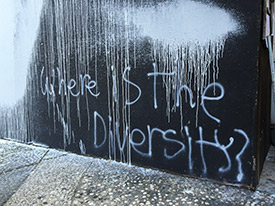 Photo Credit Maxwell Leung, Ph.D., CCA
Photo Credit Maxwell Leung, Ph.D., CCAThe 2017 Annual Conference in New York, taking place February 15–18, boasts a number of presentations addressing the intersections of race and contemporary art, colonialism in art history, and the Black Lives Matter movement. Here are a few highlights:
Deborah Willis of New York University and Cheryl Finley from Cornell University will provide a historical overview through a session titled “Picturing Social Movements from Emancipation to Black Lives Matter.” Kellie Jones, an art historian at Columbia University and winner of a 2016 MacArthur fellowship, is among the speakers. Public Art Dialogue, one of CAA’s many affiliated societies, will host a discussion on “Public Art in the Era of Black Lives Matter.” The first presenter will be Evie Terrono from Randolph-Macon College in Virginia, who has researched “Symbolic Interventions, New Narratives: Challenging the Authority of the Confederate Flag.”
The session “Race and Labor in the Art World” will be chaired by Hayes Peter Mauro of Queensborough Community College, City University of New York. The scheduled speakers—Sarah Cervenak, John Ott, and LaTanya Autry—teach in North Carolina, Virginia, and Connecticut, respectively. Elsewhere, four panelists will offer case studies of race and representation in nineteenth-century art, and another collection of scholars will examine “Blackness, Violence, Representation.” The Arts Council of the African Studies Association, also a CAA affiliated society, has given the tantalizing title of “Flesh” to its session, while another panel will give form to “Post-Black and Liquid Blackness” in contemporary African American art.
Richard Hylton from University for the Creative Arts in England will lead a panel that sheds light on British perspectives regarding “Contemporary Art, Ethnography, and the Western Museum,” while scholars from Italy and South Africa will lead a session called “Writing Art History in the Margins: Rethinking Centers and Peripheries in ‘Non-Western’ Art Historiography.” Finally, the Association for Critical Race Art History, another CAA affiliate, will present “Riff: Black Artists and the European Canon.” Among the artists to be examined are Robert Colescott, Carrie Mae Weems, and Moe Brooker.
News from the Art and Academic Worlds
posted by Christopher Howard — November 30, 2016
Each week CAA News summarizes eight articles, published around the web, that CAA members may find interesting and useful in their professional and creative lives.
When Art Offends (and Isn’t Understood)
Salem State University in Massachusetts invited artists to create works inspired by the US presidential election. Several paintings, created by critics of Donald Trump, were intended to draw attention to oppression. But minority students were offended—and the university shuttered the exhibition. (Read more from Inside Higher Ed.)
The New Go-To Platform for Finding Artist Residencies
Anyone who has ever tried to find an artist residency knows it’s a difficult task. There are dozens of online aggregators of residency programs, but none claims to be comprehensive, most if not all websites are updated manually, and artists are hard-pressed to narrow down the multitude of opportunities to reflect their personal needs and preferences. (Read more from Artsy.)
How to Fix the Art World, Part 2
Last August ARTnews embarked on an epic project: finding out what inhabitants of the art world think is wrong with their world and how they would fix it. In the ensuing months the magazine spoke with more than fifty individuals—artists and curators, critics and historians, art dealers and an art-fair director—to gather a range of perspectives. (Read more from ARTnews.)
Help Desk: Solo No-No
I’m updating my CV and visited a friend’s website to clarify the details of a collaborative piece we worked on a few years ago. While looking for that project, I came across a different listing that we also shared: a two-person exhibition that he has billed as a solo exhibition. How do I deal with this? (Read more from Daily Serving.)
The Factory of Fakes
A digitally recorded copy, Adam Lowe argues, can be both a lode of “forensically accurate information” and a vehicle for provoking a “deep emotional response.” Because an artwork can be scanned without physical contact, the facsimile process makes traditional conservation efforts—from repainting to varnishing—seem like an exalted form of graffiti. (Read more from the New Yorker.)
It Is Pretty Easy to Get Art Experts to Fall for Fakes
The world of modern art is often viewed as irrational and perplexing by outsiders and insiders alike. Last fall, for example, an Italian art museum displayed an unusual installation, consisting of strewn-about champagne bottles, cigarette butts, and confetti, but cleaners at the gallery threw it all away, mistaking it for the leftover detritus of a party held at the museum the night before. (Read more from New York Magazine.)
MFAs Are Expensive—Here Are Eight Art-School Alternatives
Higher education is in a state of crisis. Student debt is skyrocketing, and those looking for master’s degrees pay ever-higher sums to institutions that frequently underpay the adjunct faculty they employ as teachers. For those in the arts, whether or not an MFA is worth the investment of time and money is perpetually vexing. (Read more from Artsy.)
DIY Syllabus: How to Move Beyond the Transactional
We all know that a syllabus must convey information and set an open and inviting tone. But no matter how skillfully and engagingly it does those things, a syllabus must move beyond the basics and embody the actual substance of the course to be truly effective. (Read more from Vitae.)
2016 Wyeth Foundation for American Art Publication Grant Winners
posted by Christopher Howard — November 29, 2016
CAA is pleased to announce eight recipients of the annual Wyeth Foundation for American Art Publication Grant for 2016. Thanks to a generous grant from the Wyeth Foundation, these awards are given annually to publishers to support the publication of one or more book-length scholarly manuscripts in the history of American art, visual studies, and related subjects. For this grant program, “American art” is defined as art created in the United States, Canada, and Mexico.
The eight grantees for 2016 are:
- Ella Diaz, Flying under the Radar with the Royal Chicano Air Force: Mapping a Chicano/a Art History, University of Texas Press
- Jason Hill, Artist as Reporter: Weegee, Ad Reinhardt, and the PM News Picture, University of California Press
- Wadsworth Jarrell, AfriCOBRA: Experimental Art toward a School of Thought, Duke University Press
- Kellie Jones, South of Pico: African American Artists in Los Angeles in the 1960s and 1970s, Duke University Press
- Jennifer Josten, Mathias Goeritz: Modernist Art and Architecture in Cold War Mexico, Yale University Press
- Lauren Kroiz, Cultivating Citizens: The Regional Work of Art in the New Deal Era, University of California Press
- Tirza Latimer, Eccentric Modernism: Making Differences in the History of American Art, University of California Press
- Jennifer Van Horn, The Power of Objects in Eighteenth-Century British America, University of North Carolina Press
Eligible for the grant are book-length scholarly manuscripts in the history of American art, visual studies, and related subjects that have been accepted by a publisher on their merits but cannot be published in the most desirable form without a subsidy. Authors must be current CAA members. Please review the application guidelines for more information.
Fall 2016 Recipients of the Millard Meiss Publication Fund
posted by Christopher Howard — November 28, 2016
This fall, CAA awarded grants to the publishers of seven books in art history and visual culture through the Millard Meiss Publication Fund. Thanks to the generous bequest of the late Prof. Millard Meiss, CAA gives these grants to support the publication of scholarly books in art history and related fields.
The seven Meiss grantees for fall 2016 are:
- Rebecca Brown, Displaying Time: The Many Temporalities of the Festival of India, University of Washington Press
- Richard Emmerson, Apocalypse Illuminated: The Visual Exegesis of Revelation in Medieval Illustrated Manuscripts, Pennsylvania State University Press
- Michele Greet, Transatlantic Encounters: Latin American Artists in Paris between the Wars, Yale University Press
- Sharon Hecker, A Moment’s Monument: Medardo Rosso and the International Origins of Modern Sculpture, University of California Press
- Katie Hornstein, Picturing War in France, 1792–1856, Yale University Press
- Amy Neff, A Soul’s Journey into God: Art, Theology, and Devotion in a Franciscan Manuscript of the Late Duecento, Pontifical Institute of Mediaeval Studies
- Hsueh-man Shen, Authentic Replicas: Buddhist Art in Medieval China, University of Hawai‘i Press
Books eligible for Meiss grants must already be under contract with a publisher and on a subject in the visual arts or art history. Authors and presses must be current CAA members. Please review the application guidelines for more information.
News from the Art and Academic Worlds
posted by Christopher Howard — November 23, 2016
Each week CAA News summarizes eight articles, published around the web, that CAA members may find interesting and useful in their professional and creative lives.
Trump and the Arts: Evita, Huge Towers, and a Snub for Warhol
For the arts world, the question is essentially the same as the one being asked everywhere right now, across the political spectrum: “What will a President Donald J. Trump mean for me?” The answer from artists, museums, theaters, actors, writers, musicians, and the movie and television industry is: “Your guess is as good as mine.” (Read more from the New York Times.)
How to Fix the Art World, Part 1
Last August ARTnews embarked on an epic project: finding out what inhabitants of the art world think is wrong with their world and how they would fix it. In the ensuing months ARTnews spoke with more than fifty individuals—artists and curators, critics and historians, art dealers and an art-fair director—to gather a range of perspectives. (Read more from ARTnews.)
An Era for Women Artists?
Nearly half a century has passed since Linda Nochlin posed her question “Why Have There Been No Great Women Artists?” Now we face it again, as a new wave of all-women exhibitions revives the question and suggests a new answer. (Read more from the Atlantic.)
The Ballet of White Victimhood: On Jordan Wolfson, Petroushka, and Donald Trump
The white body, through its repetition in a history of art that is largely painted white itself, has become an easy and lazy signifier for a universal body, for a metaphorical body, one that becomes symbolic and slippery, that can always be more than its mere representation. The nonwhite body has greater difficulty in attaining this metaphorical bounty. (Read more from Artspace Magazine.)
“Decolonization Is Not a Metaphor”: Artists Space Steps out of Analysis and into Action
Amid all the election paraphernalia of the past few months, some bold stickers have been appearing across New York City. With white text on a red background, they demand: “Decolonize This Place.” At Artists Space Books and Talks, the home base of Decolonize This Place through December 17, the “source” is more complicated than any one person, location, or idea. (Read more from ARTnews.)
Thinking outside the Pipeline
Many faculty diversity initiatives are predicated on the pipeline theory: that getting more minority students to enroll in PhD programs eventually will lead to gains in numbers of professors from underrepresented backgrounds. The pipeline theory has long had its critics, who point to other problems within the academic recruitment, hiring, and retention system. A new study seeks to back up such criticisms with hard data. (Read more from Inside Higher Ed.)
Impostor Syndrome Is Definitely a Thing
Impostor syndrome is the feeling that you don’t belong—in graduate school or in your first academic or alt-ac job—and it’s more common that you might think. It makes people believe that they aren’t good enough, smart enough, or deserving enough. (Read more from the Chronicle of Higher Education.)
Ugly Consequences of Complaining about “Students These Days”
Sometimes we do need to vent. It isn’t easy teaching students who don’t come to class prepared, seem to always want the easiest way, are prepared to cheat if necessary, don’t have good study skills, and aren’t interested in learning what we love to teach. At some point, though, venting morphs into complaining, and what we say about students becomes what we think about them. (Read more from Faculty Focus.)
Finalists for the 2017 Morey and Barr Awards
posted by Christopher Howard — November 22, 2016
CAA is pleased to announce the 2017 finalists for the Charles Rufus Morey Book Award and two Alfred H. Barr Jr. Awards. The winners of the three prizes, along with the recipients of nine other Awards for Distinction, will be announced in late January and presented during Convocation in conjunction with CAA’s 105th Annual Conference in New York, taking place February 15–18, 2017.
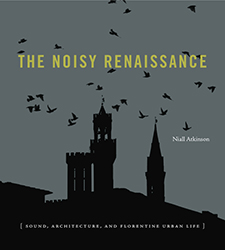 Charles Rufus Morey Book Award
Charles Rufus Morey Book Award
The Charles Rufus Morey Book Award honors an especially distinguished book in the history of art, published in any language between September 1, 2015, and August 31, 2016. The three finalists for 2017 are:
- Niall Atkinson, The Noisy Renaissance: Sound, Architecture, and Florentine Urban Life (University Park: Pennsylvania State University Press, 2016)
- Elizabeth Kindall, Geo-Narratives of a Filial Son: The Paintings and Travel Diaries of Huang Xiangjian (1609–1673) (Cambridge, MA: Harvard University Asia Center, 2016)
- Kishwar Rizvi, The Transnational Mosque: Architecture and Historical Memory in the Contemporary Middle East (Chapel Hill: University of North Carolina Press, 2015)
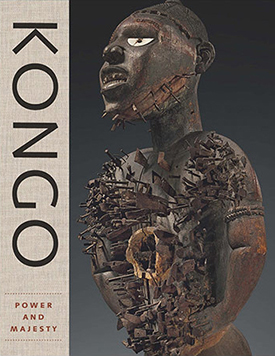 Alfred H. Barr Jr. Award
Alfred H. Barr Jr. Award
The Alfred H. Barr Jr. Award for museum scholarship is presented to the author(s) of an especially distinguished catalogue in the history of art, published between September 1, 2015, and August 31, 2016, under the auspices of a museum, library, or collection. The five finalists for 2017 are:
- Ruth Fine, ed., Procession: The Art of Norman Lewis (Philadelphia: Pennsylvania Academy of the Fine Arts, in association with the University of California Press, 2015)
- Barbara Haskell and Harry Cooper, Stuart Davis: In Full Swing (Washington, DC: National Gallery of Art; New York: Whitney Museum of American Art; New York: DelMonico Books, 2016)
- Alisa LaGamma, Kongo: Power and Majesty (New York: Metropolitan Museum of Art, 2015)
- Helen Molesworth, ed., Kerry James Marshall: Mastry (Chicago: Museum of Contemporary Art, Chicago; New York: Skira Rizzoli, 2016)
- Adrian Sudhalter, Dadaglobe Reconstructed (Zürich: Kunsthaus Zürich/Scheidegger & Spiess, 2016)
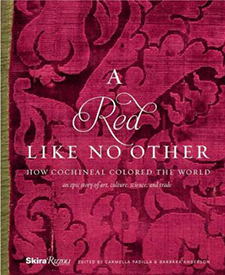 Alfred H. Barr Jr. Award for Smaller Museums, Libraries, Collections, and Exhibitions
Alfred H. Barr Jr. Award for Smaller Museums, Libraries, Collections, and Exhibitions
In 2009, CAA established a second Barr award for the author(s) of catalogues produced by smaller museums, libraries, and collections with an annual operating budget of less than $10 million. The five finalists for the second Barr award for 2017 are:
- Zdenka Badovinac, Eda Čufer, and Anthony Gardner, eds., NSK from “Kapital” to Capital: Neue Slowenische Kunst—An Event of the Final Decade of Yugoslavia (Ljubljana, Slovenia: Moderna galerija; Cambridge, MA: MIT Press, 2015)
- Geoffrey Batchen, Emanations: The Art of the Cameraless Photograph (New Plymouth, New Zealand: Govett-Brewster Art Gallery; New York: DelMonico Books, 2016)
- Andreas Marks, ed., Tōkaidō Texts and Tales: Tōkaidō “gojūsan tsui” by Kuniyoshi, Hiroshige, and Kunisada (Gainesville: University Press of Florida, 2015)
- Carmella Padilla and Barbara Anderson, eds., A Red Like No Other: How Cochineal Colored the World (New York: Skira Rizzoli, in association with the Museum of International Folk Art, 2015)
- Valérie Rousseau, Art Brut in America: The Incursion of Jean Dubuffet (New York: American Folk Art Museum, 2015)
The presentation of the 2017 Awards for Distinction will take place on Wednesday evening, February 15, 5:30–7:00 PM, at the New York Hilton Midtown in Manhattan. The event is free and open to the public. For more information about CAA’s Awards for Distinction, please contact Katie Apsey, CAA manager of programs.


